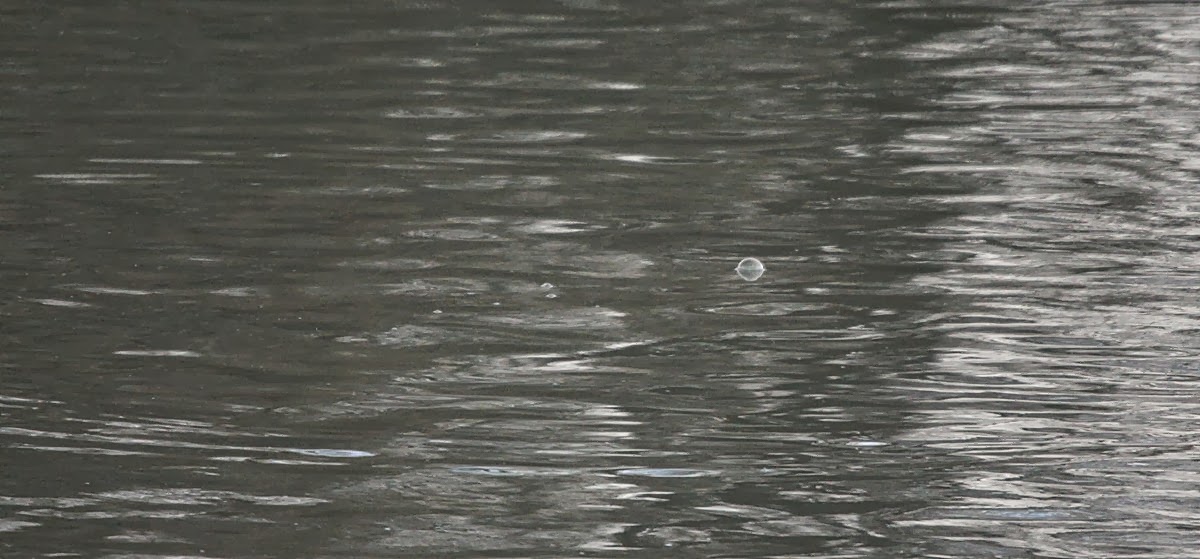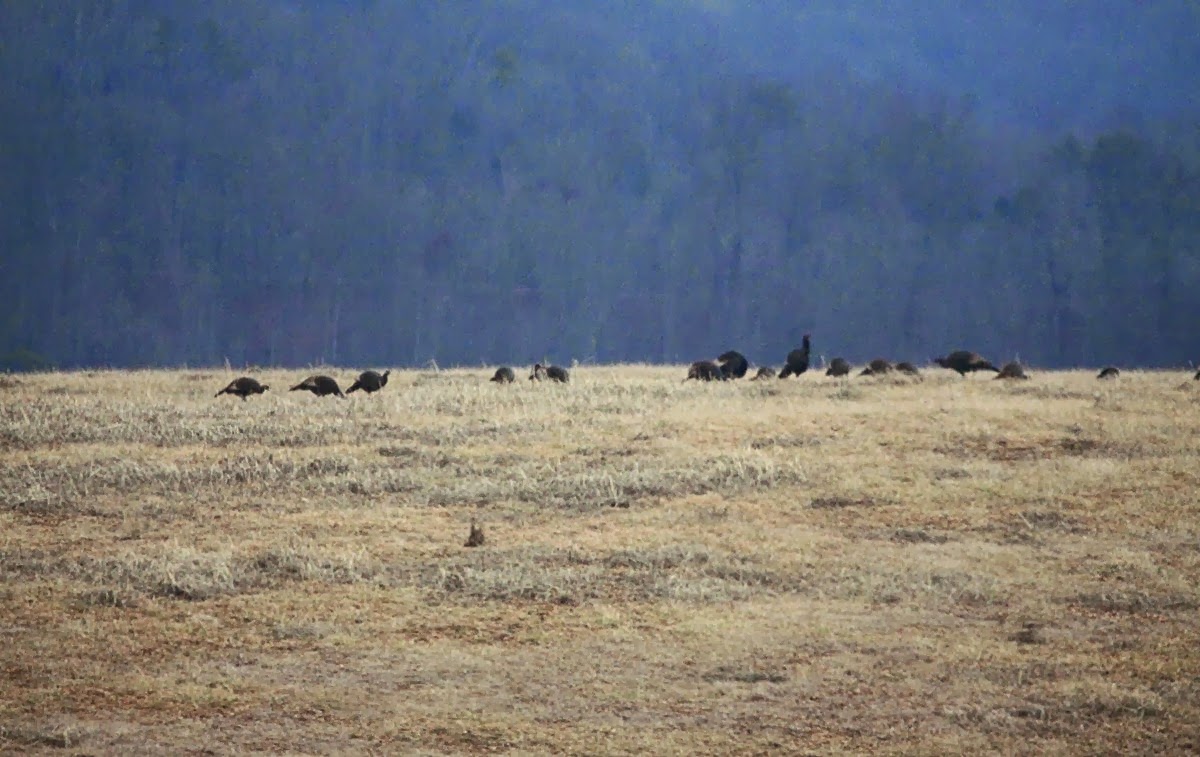Pretty cool, huh? Of course we talked about this last blog entry I think, or the one before. The nest is so deep that both eagles can stand and still almost be out of sight making it appear the nest is empty. They are fooling the folks who actually live near them and have been doing so for years. Love it!!
This tailrace water is really looking fine today. I'm so very tempted to tie up some fishing flies and give it a go. I ran into something today I've not seen before in my almost 40 years of flyfishing. Well, I'll get to it.
I wanted to use the pictures to illustrate some methods of discovering trout, but the pictures aren't clear or large enough to suit the purpose.
No, it's a wasted effort. Can't do what I wanted. So, you can see by the photos the various types of trout water that are on hand at this tailrace.
I showed you the fish kill a couple days ago. Well, that was just one spot on the river. One must remember that the entire river, both shorelines is covered with threadfin shad that have washed out of the Cherokee Reservoir and into this tailrace. Their count has to be in the millions. It is a significant fish kill and involves "only" threadfin shad.
I might further add that the fragrance along the water has had a slight alteration tin aroma.
OK - enough dead shad.
How bout a prehistoric goat!
It's a trick photographing a squirrel hidden behind branches and stems. The auto focus wants to focus on the closest thing it sees which is usually a stem. Cute little fella.
I'd guess he's carrying some soft materials to line his nest with.
OK, here's the troutalogical part of this entry. The following is a troutorial on the ring of the rise:
So then we ask, to what do we refer to when we speak of the ring of the rise? Why, sirs and misses - I am referring to the activity of a wild or even domestic trout in the act of taking a fly from the surface of the water. What follows will either interest you or cause you to click off this entry and go else-ware due to boredom, maybe. I'll try to be brief.
I pulled along the river and stopped to glass the surface with the binocs. It was then I noticed rise forms (widening pools) on the river's surface. I immediately shifted the binoculars to find what the fish were taking from the surface. They were sucking in very tiny black flies.
If you flyfish, these bugs are about a size 22 or 24 hook. The thing is that when I captured a few of these flies, they were like nothing I ever saw on the water, yet they were present on this water by the thousands and I've never heard a word about them. They aren't caddisfly, stonefly or midge. They resemble a tiny, fancy housefly.
I originally guessed stonefly when at the river because I can't see real well anymore and I missed the detail of the fly but, when I got the pictures enlarged it was obvious that stonefly was an incorrect ID. I still don't know what this bug is but it's a prominent player on the water. I'm not sure fly anglers really care about hatches anymore. I hear alot about beadhead patterns and a lot of new fly patterns but not much mention of the old original standbys of over a century ago. Oh well... I will get this bug ID thing sorted out.
Anyway, imagine you can see these bugs floating down the river's surface spaced about a foot apart from each other and they watching as one by one they disappear and the only thing left is an ever widening circle on the surface.
The result of a trout sipping a fly from the surface is known as a rise form by fly fishermen. Two trout have taken two flies from the surface below:
Obviously, if one wanted to catch a trout, one would cast his fly out to where the rise form is, or at least near by. Would you say that is so? Wrong. There are many, many fly anglers who cast to the rise form and not to the trout. Imagine this: The trout lays upon the bottom of the stream facing into the current. A group of flies float down above him and he starts to rise beneath the group of flies all the while allowing the current to push him downstream at the same speed as the flies above him. As he moves downstream backwards beneath the flies, he continues to rise closer and closer until he nearly makes contact and sucks them in. Here's the important part. As soon as he grabs the fly, the trout darts back upstream to his spot on the bottom and waits for further action. So, the rise form created by the trout has been floating downstream the whole time all this drama has unfolded and kept moving downstream even during the trout's race back to his starting point. The result is that the rise form is about five to ten feet behind the trout when you see it on the surface. He isn't there anymore, but well upstream. There are circumstances where the trout will linger at the rise form but they are not the normal.
When an air bubble is present on the surface with a rise form - the trout has taken a fly from the surface. The absence of the air bubble may indicate the trout has taken an emergent fly subsurface. There's a lot to it, this flyfishing thing.
It is an interesting way to fish and really does require some skill to enjoy consistent success. But the old saying is that if one keeps a fly on the water long enough he will catch a trout. I guess.
And, the last shot of the entry as well as the day. See ya tomorrow.


































No comments :
Post a Comment
I appreciate your interest in my blog and welcome your comments